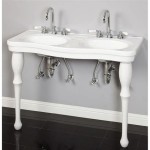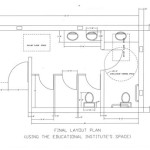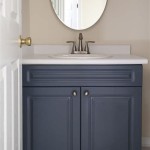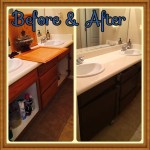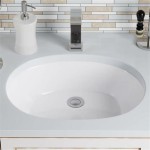Commercial Bathroom Partitions Dimensions
Commercial bathroom partitions play a crucial role in ensuring privacy and accessibility in public restrooms. Understanding the standard dimensions and variations available is essential for architects, contractors, and facility managers when designing and renovating commercial restrooms. Properly sized partitions contribute to user comfort and compliance with building codes and accessibility regulations.
Key Considerations for Commercial Bathroom Partition Dimensions
- ADA Compliance
- Privacy
- Traffic Flow
- Available Space
- Material and Durability
- Maintenance
- Budget
The Americans with Disabilities Act (ADA) sets specific requirements for accessible bathroom stalls to accommodate individuals with disabilities. These requirements dictate dimensions for stall width, depth, door swing, grab bar placement, and maneuvering clearances. Compliance with ADA Standards is mandatory for all public accommodations.
Standard Stall Dimensions
- Standard Stall Width: 36 inches (minimum)
- ADA Compliant Stall Width: 60 inches (minimum)
- Standard Stall Depth: 54 inches (minimum)
- ADA Compliant Stall Depth: 56 inches (minimum) with an in-swinging door or 59 inches with an out-swinging door
While the minimum stall width is typically 36 inches, larger stalls offer increased comfort and are often preferred in higher-end establishments. The depth of the stall is measured from the inside face of the partition to the back wall. The pilaster where hinges are placed, is not part of the stall's dimension. ADA-compliant stalls must provide sufficient space for wheelchair users to maneuver and transfer.
Partition Height
- Standard Partition Height: 68-72 inches
- Floor-Mounted Partitions:
- Ceiling-Hung Partitions:
Partition height contributes significantly to user privacy. Standard partitions typically range from 68 to 72 inches in height. Floor-mounted partitions are secured to the floor and offer a more traditional look. Ceiling-hung partitions are suspended from the ceiling and provide a more contemporary aesthetic and are easier to clean underneath. Choosing the appropriate height depends on the desired level of privacy and the overall design of the restroom.
Door Dimensions and Hardware
- Door Width: 24-36 inches
- Hardware: ADA Compliant
Bathroom stall doors typically range in width from 24 to 36 inches. ADA-compliant stalls require doors with a minimum width of 32 inches to allow for easy access. Hardware, including handles, latches, and hinges, must also comply with ADA standards. Lever-operated hardware is generally preferred for ease of use.
Material and Thickness
- Powder-Coated Steel
- Solid Plastic (HDPE)
- Phenolic
- Stainless Steel
- Laminate
Commercial bathroom partitions are available in various materials, each with its own advantages and disadvantages. Powder-coated steel is a cost-effective and durable option. Solid plastic (HDPE) is resistant to moisture and impact. Phenolic offers superior durability and resistance to graffiti. Stainless steel is a premium choice known for its sleek appearance and corrosion resistance. Laminate offers a wide variety of design options. The thickness of the partition material also impacts durability and sound insulation.
Planning and Layout
- Traffic Flow Analysis
- Building Codes
- Accessibility Requirements
Careful planning and layout are crucial for optimizing restroom functionality and ensuring compliance with regulations. Traffic flow analysis helps determine the number and arrangement of stalls to minimize congestion. Building codes dictate minimum requirements for the number of fixtures and accessible stalls based on occupancy. Adhering to accessibility requirements ensures that the restroom is usable by individuals with disabilities.
Maintenance Considerations
- Cleaning
- Repairs
- Durability
Selecting materials that are easy to clean and maintain can reduce long-term costs. Smooth, non-porous surfaces are less likely to harbor bacteria and are easier to sanitize. Durable materials with resistance to vandalism and wear and tear are essential for high-traffic restrooms. Regular maintenance and prompt repairs can extend the lifespan of bathroom partitions.
Understanding commercial bathroom partition dimensions and considerations is fundamental to creating functional, compliant, and aesthetically pleasing restroom spaces. Careful consideration of these factors contributes to user comfort, accessibility, and the overall success of the project.

Toilet Partitions By The Numbers Height Partition Plus

Do You Know About The Toilet Cubicle Sizes Jialifu

How To Measure Your Commercial Space For Bathroom Partitions

Typical Bathroom Partition Dimensions One Point Partitions

Bradley Ic43660 Toilet Partition 4 In Corner Compartments 144 W X 61 1 D Stainless Steel Totalrestroom Com

Bathroom Partitions Stainless Steel Partition Complete 2 In Corner Co Restroom Design

Privacy Heights

Toilet Partition Dimensions All You Need To Know 10 Spec

Determining Partition Layouts And Dimensions Rex Williams

Slimline Toilet Partitions Ceilings Capco
Related Posts


